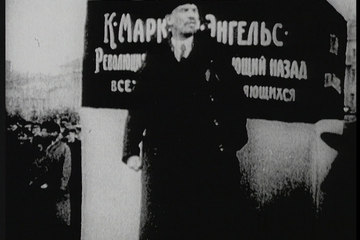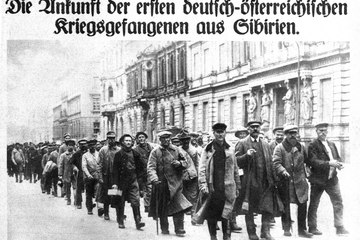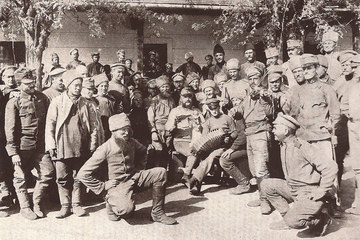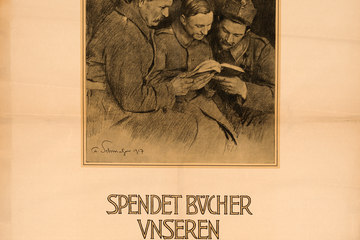Verena Moritz
The Balkan Front
After the defeats by Italy (at Solferino and Magenta in 1859) and by Prussia (at Königgrätz in 1866), thoughts of prestige in Viennese court and government circles were linked to efforts to try to expand the Danube Monarchy’s sphere of influence in the Balkans. Focusing on that particular goal, the Habsburg Empire was prepared to disregard the international consequences of this policy. In the end, a war with Serbia was inevitable, bringing with it the risk of conflagration.
Difficult Homecoming
The consequences of the First World War often blocked the path to a rapid integration of home-comers from war captivity. Besides widespread economic and social problems, conflicts also arose in various countries motivated by ideology.
‘Transport Home from Captivity’
The return home of hundreds of thousands of prisoners of war took place towards and after the end of the First World War under circumstances of revolution. Regular evacuation methods were hard to carry out in the wake of the upheavals in Central and Eastern Europe. To this was then added the mistrust felt towards the prisoners by those back home. Defensive measures were taken, which likewise set up conflict.
Witnesses and actors in the revolution
The end of the Tsarist domination and the ‘October Revolution’ was linked in the minds of prisoners of war in Russia above all with the hope of a speedy return home. Those soldiers who had themselves experienced close-up the emergence of Soviet power and thus a realignment in world history were less than receptive to Bolshevik ideology.
The Meaning of Prisoners’ Labour
Actually, according to the Hague Convention on War of 1907, captive military personnel were not supposed to carry out any activities which had a direct connection with war efforts. In fact, however, many enemy soldiers controlled by the opposing troops were even employed near the front. Generally the question arose for some countries as to whether the ‘foreign military persons’ had not become indispensable from an economic viewpoint.
The relationship between prisoners of war and the civilian population
The military authorities were at pains to keep the enemy soldiers under their control as far away as possible from the local civilian population. As time passed, they had to acknowledge, however, that real fraternisation arose. Foreigners and locals were equally affected by the growing economic, social and political crisis.
National propaganda and prisoners of war
To weaken empires with many peoples in it by supporting national opposition movements was a strategy pursued by many warring powers. That the multi-ethnic monarchies of the Romanovs and the Habsburgs should use such methods themselves proved to be a dangerous game, however.
Aid for prisoners for war
A range of differing organisations set themselves the goal of removing the numerous deficiencies in the prisoners of war system. Ultimately, however, all initiatives failed in the face of the sheer scale of the problems involved.
Humanitarian catastrophes in captivity
The waiting at assembly areas and the transportation to the hinterland already entailed enormous exertion and suffering on the part of the many starving and often wounded prisoners. Once arrived at the destination in the hinterland, they then endured the lack of acceptable lodgings, especially to begin with. The camps in Central and Eastern Europe, in Siberia and Central Asia were locations of collective misery and mass death. Austria-Hungary was no exception in this regard.









